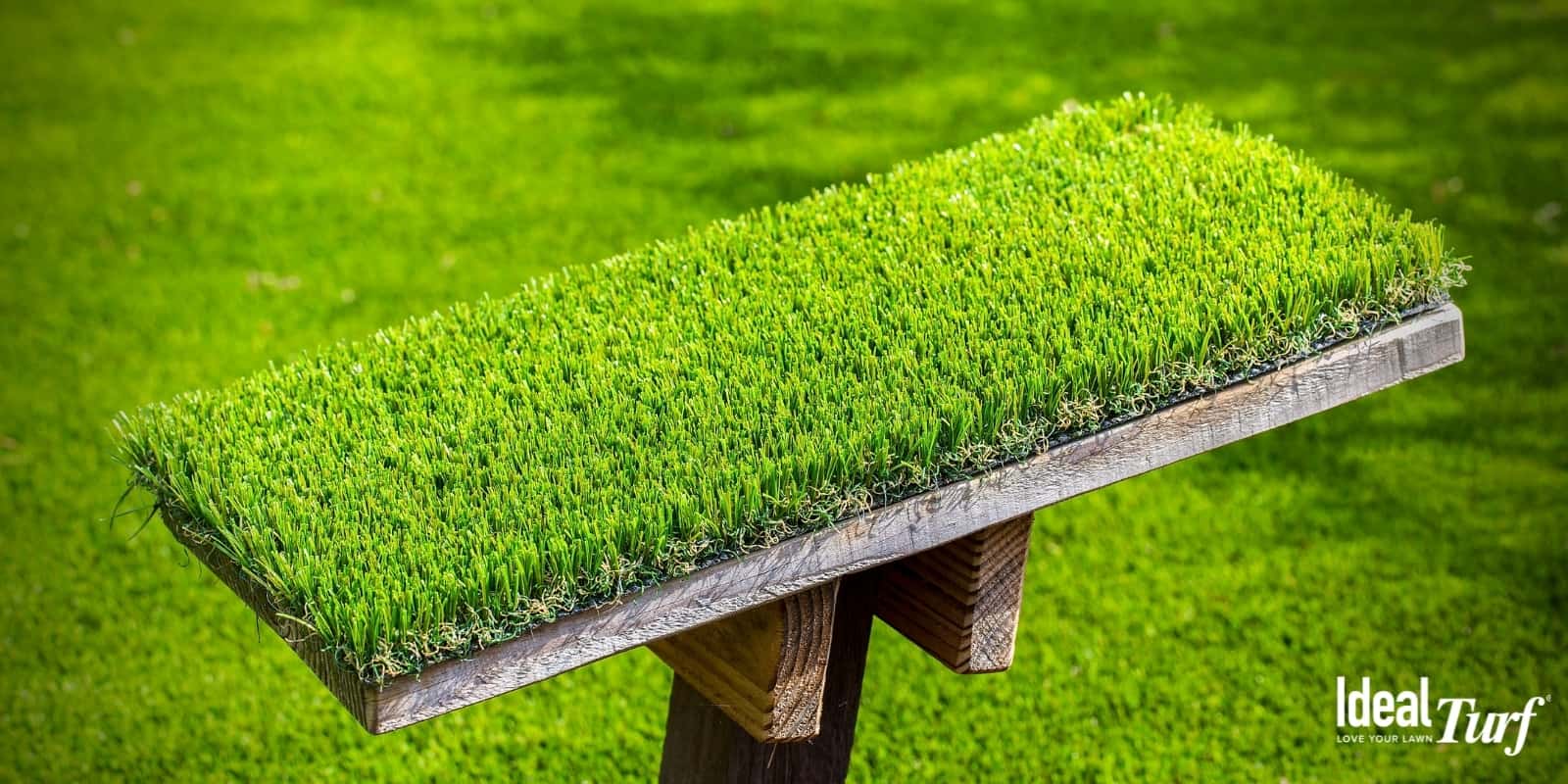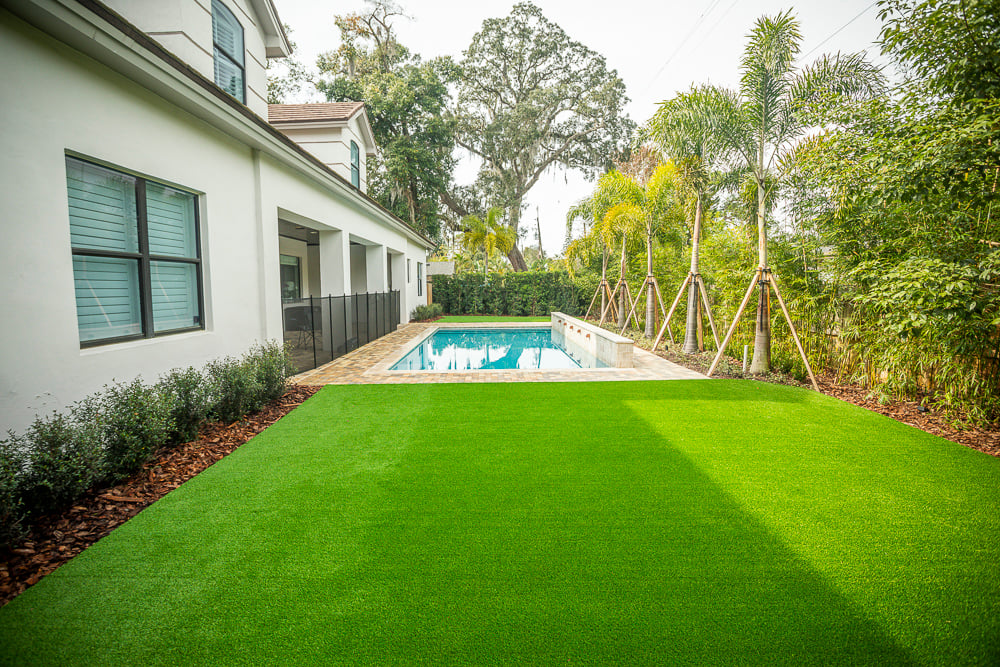Dependable Artificial Turf Companies Phoenix for a Attractive and Evergreen Lawn
Dependable Artificial Turf Companies Phoenix for a Attractive and Evergreen Lawn
Blog Article
Explore the Environmental Benefits of Opting for Synthetic Grass Solutions
The adoption of artificial grass solutions provides a compelling chance to resolve pressing ecological difficulties. By considerably lowering water use and decreasing the application of unsafe chemicals, these alternatives not only advertise lasting landscaping but likewise shield local ecosystems.
Water Conservation Perks
One of one of the most considerable advantages of synthetic grass is its capability to conserve water. Typical lawn yards require considerable watering, specifically in areas prone to drought or water limitations. On the other hand, synthetic grass does not need watering, significantly minimizing the total need for water sources. This function is especially helpful in deserts where water shortage is a pressing concern.
By removing the demand for normal watering, synthetic grass adds to sustainable landscape techniques and aids reduce the ecological impact of too much water intake. The preservation of water extends to the reduction of drainage, which can lead to dirt erosion and waterway air pollution.
Additionally, the setup of synthetic grass permits homeowners and towns to designate water sources extra successfully, concentrating on essential uses such as drinking water and farming. The change in the direction of fabricated lawn not just advertises accountable water use however additionally aligns with broader environmental goals intended at maintaining natural deposits.
As neighborhoods progressively prioritize sustainability, the water conservation advantages of synthetic grass offer an engaging situation for its adoption in commercial and household landscape design tasks.
Reduced Chemical Usage
The shift to synthetic grass considerably decreases the dependence on chemical therapies typically made use of in all-natural turf upkeep. Standard grass management generally involves the application of herbicides, pesticides, and plant foods to advertise growth and control pests. These chemicals can present risks to human wellness, local wild animals, and the environment, adding to soil and water contamination.
In comparison, synthetic lawn eliminates the demand for these dangerous substances. When mounted, it requires marginal upkeep, mostly containing routine cleaning and seldom infill replenishment. This reduction in chemical use not just benefits the instant environment yet also adds to more comprehensive eco-friendly security. By lessening the launch of synthetic compounds right into the community, man-made lawn promotes healthier soil and water systems.
Furthermore, the lack of chemical drainage linked with synthetic grass installations helps safeguard local waterways from pollution, supporting aquatic life and preserving biodiversity. Arizona artificial turf. As areas significantly focus on sustainable practices, opting for synthetic grass offers a sensible remedy that lines up with environmental conservation objectives. Via this change, homeowner can enjoy rich eco-friendly areas without compromising eco-friendly health, leading the way for an extra lasting future
Lower Carbon Impact

Additionally, the installment of synthetic grass can cause considerable water preservation. All-natural lawns need substantial quantities of water for irrigation, which not only includes in the carbon footprint connected with water removal and therapy but additionally pressures regional water resources. On the other hand, synthetic grass requires marginal maintenance, calling for no watering, consequently considerably reducing water use and its associated power expenses.
In addition, the longevity of man-made grass adds to its decreased carbon influence. With a life-span of up to 15 years or more, the need for frequent replacements is decreased, resulting in less waste and lower energy consumption in manufacturing and disposing of conventional turf options. In general, synthetic grass provides a sustainable option for environmentally mindful landscaping.
Habitat Preservation
Habitat preservation is a crucial consideration in the argument over landscaping selections, specifically when contrasting synthetic grass to natural turf. Natural lawn lawns often require substantial upkeep, including the usage of herbicides, fertilizers, and pesticides, which can adversely influence neighborhood communities. These chemicals can seep right into the dirt and rivers, hurting native flora and animals and interrupting neighborhood habitats.
Fabricated lawn eliminates the demand for hazardous chemicals, consequently safeguarding nearby wildlife and maintaining the integrity of surrounding ecosystems. The installment of artificial turf can lead to the conversion of previous lawn areas right into even more biodiverse landscapes, such as pollinator gardens or native plant areas, which can sustain regional wild animals.
Inevitably, the shift to synthetic grass not only conserves water and decreases upkeep initiatives however also promotes an extra unified relationship in between human activities and the natural environment, promoting environment preservation in the process.
Long-Term Sustainability
Lasting sustainability is a critical aspect in examining the benefits of synthetic grass over conventional grass yards. One of one of the most considerable advantages of synthetic grass is its sturdiness; it can last as much as 15-20 years with very little upkeep, whereas all-natural yard needs constant reseeding and substitute. This longevity decreases the demand for continuous sources, such as water, fertilizers, and chemicals, which are crucial for preserving a healthy and balanced turf yard.
In addition, synthetic grass adds to a reduction in carbon emissions connected with lawn treatment tools. Conventional yards often need gas-powered lawn mowers, leaners, and blowers, every one of which contribute to air pollution. Phoenix turf companies. In contrast, synthetic grass eliminates the requirement for such devices, advertising a cleaner setting
In addition, the manufacturing of synthetic grass significantly makes use of recycled products, improving its sustainability profile. As manufacturers take on environmentally friendly practices, the environmental impact of synthetic grass proceeds to decrease.

Conclusion
The adoption of synthetic grass solutions presents considerable environmental advantages, consisting of substantial water preservation, helpful resources minimized reliance on damaging chemicals, and a lower carbon footprint. Moreover, synthetic grass aids in protecting all-natural environments by decreasing land disturbance and advertising long-term sustainability through the usage of resilient products. Jointly, these elements emphasize the capacity of synthetic grass to contribute favorably to environmental health and provide a feasible option to conventional landscaping practices in a significantly resource-conscious globe.
In contrast, man-made turf does not need watering, dramatically decreasing the total need for water resources. By lessening the release of artificial compounds right into the community, fabricated turf advertises much healthier dirt and water systems.
Additionally, the installment of synthetic grass can result in significant water conservation. In contrast, synthetic turf needs very little maintenance, requiring no watering, therefore substantially lowering water usage and its linked power prices.

Report this page